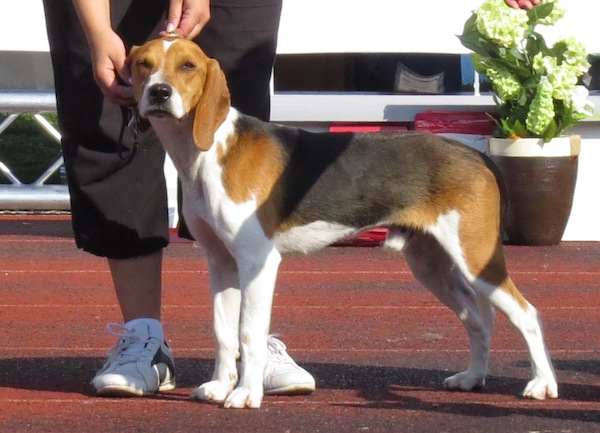
In 1947, the Soviet Union’s Ministry of Agriculture and Economy issued a mandate that all member states develop at least one unique national dog breed suited for that country’s environment.
The short and simplistic answer as to why the Soviets issued such a decree was that large dogs were being blamed for the decline of local wildlife in Soviet satellite countries. Part of the reason “behind the reason” was a bit more complex. Following WWII, the Soviet Union was keen to show the world that it was one big happy family, a true union of states, and not a loose collection of countries held under Russian domination. Each country having its own national breed suggested the Soviet Union’s magnanimity.
Estonia, however, had a problem. While most of the Soviet countries developed their required breed using local dogs, Estonia didn’t have any pre-existing breeds deemed suitable for a new breed that had to have a maximum height of 17 inches. Until 1914, Estonian hunters used larger breeds, but now they to develop a new dog smaller than any existing hunting breeds in the country.
Breeders started the project by using the smallest native hunting dogs they had, but it was immediately clear that they would have to import breeds from other countries. The Beagle and Dachshund’s size and hunting abilities made these two breeds natural components of the new, and as yet, unnamed breed, while several Swiss Laufhunds contributed the ability to thrive in freezing weather. Combined with pre-existing Estonian hunting dogs (and possibly with a bit of Swedish and Norwegian scenthounds added in), the Gontchaja Estonskaja, or Estonian Hound, was created. Because many of the breeds that were used were so similar to each other, the new Estonian Hound quickly bred true. It was also an intelligent, supremely agile, cheerful and happy breed that could zero in on its prey, but snuggle up with its people.
After Estonia regained its independence, the Estonian Hound was proclaimed the country’s national dog and is depicted on the Estonian Kennel Union’s coat of arms. Tremendously popular in its homeland, there are thought to be few of the hounds beyond Estonian borders. The breed was recognized by the Estonian Kennel Club, and since 2019, has been provisionally recognized by FCI – Federation Cynologique Internationale – breed standard #366.
Image: Estonian Hound by Томасина – Own work, CC BY-SA 3.0, https://commons.wikimedia.org/w/index.php?curid=29039610

it’s interesting to see how fast a breed can be created and bred true. it would be interesting to see how this breed DNA compares to it’s “foundation” breeds and compares to say, Harriers.
That would be REALLY interesting, Peggy. Wonder how it could be done….